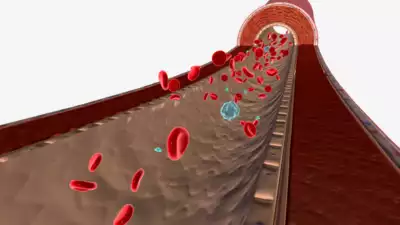19 June 2024 Punjab Khabarnama : Sickle Cell Disease (SCD) is an inherited red blood cell disorder where the body has an abnormal hemoglobin called Hemoglobin S which causes the red blood cells to become rigid and shaped like crescents or sickles, rather than the usual flexible, round shape. These abnormally shaped cells can then clump together and block blood flow in small blood vessels, leading to a range of serious health problems.
It is estimated that there are more than 1.2 million people in India who suffer from the disease which is more than ten times the number of patients in the entire American continent! But the actual number of people who harbour the gene for the disease is much higher at more than 25 million.
People who carry the gene may not have many obvious symptoms but they may suffer from complications under extreme conditions of severe cold, stress or dehydration. But also many people may actually have the disease, without being aware of it, hence it is important to know about early symptoms of the disease.
1. Anaemia: The sickle-shaped cells tend to break apart easily, leading to a constant shortage of red blood cells. This chronic anemia can causes persistent tiredness, weakness, and pale appearance of skin.
2. Pain: Periodic episodes of pain, called sickle cell crises, are the hallmark of the disease. These painful episodes occur when the sickle-shaped cells obstruct blood flow to various parts of the body, including the chest, abdomen, and joints.
3. Swelling: Unexplained painful swelling of the hands and feet, known as dactylitis, is often one of the first symptoms of the disease.
4. Frequent infections: Patients with the disease are prone to frequent infections which can become dangerous if not treated promptly with antibiotics. Chest infections like pneumonia is specially common and can become life threatening.
5. Gallstones: The breakdown of blood cells causes formation of gallstones in the gall bladder. These can cause severe tummy pain if they cause inflammation of the gall bladder and obstruct the flow of bile.
6.Vision problems: The disease can cause blockages in the blood vessels of the eyes, leading to problems with eyesight with blurry vision and difficulty in focussing.
7. Growth issues in children: Children with sickle cell disease often experience delayed growth and puberty due to the chronic shortage of red blood cells and oxygen.
Sickle cell disease is a serious genetic condition that requires lifelong management. Nowadays, the disease can be cured with a stem cell transplant and it is important that patients with the disease should be managed by a medical team with required expertise in the condition. Awareness about the disease, early diagnosis and appropriate medical care can significantly improve the quality of life for those affected by this disease. Through continued research and improved treatment options, we would have better outcomes and, ultimately, a cure for sickle cell disease.

